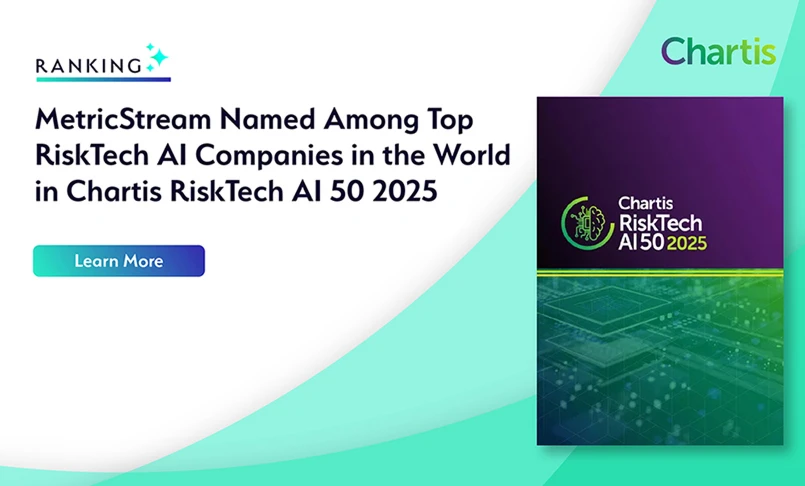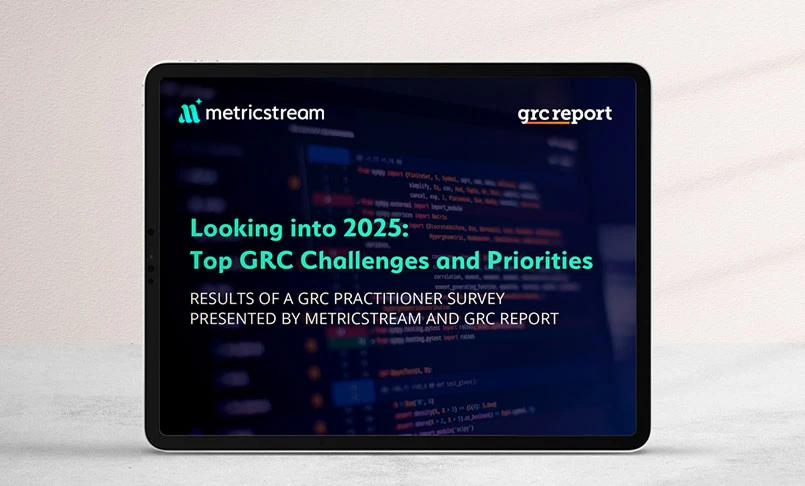The 5 Best IT Compliance Tools in 2025
- Compliance Management
- 28 July 25

Introduction
In an era of rapid digital transformation, maintaining IT compliance is vital. From data privacy laws like GDPR and CCPA to sector-specific standards like HIPAA and PCI-DSS, organizations face growing pressure to ensure controls are effective. Modern IT compliance tools automate these efforts, embedding policy enforcement into everyday operations. This post highlights the top five platforms of 2025, plus what to look for, benefits, common implementation challenges, measurement strategies, and future trends.
Why IT Compliance Tools Matter
IT compliance tools are now essential for maintaining compliance, managing cyber risk, and demonstrating control in both internal and external audits. Here are some reasons why an efficient compliance tool matters:
Here are 5 key reasons why ORM tools are essential for today’s risk-heavy business environment:
Regulatory Pressures Are Centered on IT Systems
Whether it’s GDPR’s data protection mandates or PCI-DSS requirements for handling payment data, nearly every modern regulation involves IT infrastructure. IT compliance tools provide specific functionalities—like encryption monitoring, access control audits, and system configuration checks—to help organizations comply with technical controls and prove adherence.
Bridges the Gap Between IT and Compliance Teams
Historically, IT teams and compliance officers have operated in silos. IT compliance tools bring both sides together through shared dashboards, automated workflows, and common control libraries. This integration ensures that security measures are implemented in a way that satisfies regulatory requirements and passes audit scrutiny.
Reduces Audit Preparation Time and Complexity
IT audits can be complex, especially when multiple frameworks are in play. IT compliance tools automate evidence collection, map technical controls to multiple regulations, and generate reports that satisfy auditors. This shortens audit timelines, lowers costs, and increases confidence during assessments.
Enhances Cybersecurity Through Continuous Monitoring
Modern IT compliance tools don’t just help with documentation—they also support continuous control monitoring, alerting teams to vulnerabilities or non-compliant configurations as they occur. This real-time visibility helps organizations respond to issues faster, reducing the window of exposure to threats.
Supports Scalability and Cloud Environments
As companies migrate to the cloud and adopt hybrid infrastructures, the need for scalable compliance grows. IT compliance tools are designed to integrate with cloud platforms, virtual machines, and containers—ensuring that security and compliance extend across the full tech stack.
What to Look For in IT Compliance Tools
Below are the top 5 things to look for when selecting your compliance tool:
- Automated Policy Management: By leveraging built-in regulatory libraries and continuous change detection, tools alert stakeholders asynchronously of updates that may impact compliance, reducing manual oversight.
- Continuous Configuration Integrity: Scanning cloud infrastructure and on-prem servers ensures deviations—such as expired SSL certificates or misconfigured firewall rules—are immediately flagged and acted upon.
- Comprehensive Audit Logging: The system should capture every configuration change, access event, and control execution with timestamped, immutable records, simplifying audits.
- Actionable Reporting & Visual Dashboards: Executive summaries highlight risk severity and trending violations, while granular drill-downs allow IT teams to quickly identify gaps.
- Seamless Ecosystem Integration: With APIs to SIEM, ITSM, IAM, cloud, and ticketing systems, compliance tools should feed relevant evidence and updates across your existing infrastructure.
Top 5 IT Compliance Tools
Here are the top 5 IT compliance tools organizations can utilize:
MetricStream
MetricStream is an enterprise-grade Governance, Risk, and Compliance (GRC) platform designed to unify compliance and risk management activities across large organizations. It's particularly effective for companies managing multiple regulations and a complex operational footprint.
Key Features:
- AI-First IT Compliance: MetricStream enables organizations to proactively manage cyber compliance. Powered by AI, the solution streamlines and automates cyber compliance, IT risk identification, assessment, monitoring, and mitigation across IT and OT environments, empowering your enterprise to stay resilient.
- Advanced Risk Assessments: Supports both qualitative and quantitative assessments with inherent and residual risk scoring, configurable weightings, and multi-dimensional evaluations.
- Unified Framework Coverage: MetricStream uses a federated data model and supports 9,300+ control statements mapped to 1,200+ global regulations through the Unified Compliance Framework (UCF).
- Risk-Based Control Insights: AI-driven analytics help detect high-risk patterns in control failures, vendor activity, and configuration issues.
- Custom Dashboards: Real-time insights into cross-functional compliance status, ideal for executive briefings and audit preparation.
- Evidence Automation: Seamlessly integrates with ITSM systems and cloud infrastructure to collect audit artifacts at defined intervals, reducing manual effort.
MetricStream is ideal for large enterprises looking for a scalable, AI-powered compliance solution that brings together multiple regulations, risks, and controls under a unified architecture.
OneTrust
A platform for privacy, security, and third-party risk compliance, OneTrust helps organizations manage complaince through automated tools and a robust compliance framework.
Key Features:
- Purpose-Built Compliance Libraries: Pre-mapped controls for privacy and security regulations, reducing setup time.
- Vendor Oversight: Centralized tracking and assessment of third-party vendors, including their data processing practices.
- Automated Workflows: Real-time alerts and assessments when regulations change, keeping your compliance posture current.
- Audit Readiness Kits: Dynamically populates evidence for compliance questionnaires using connected system data.
ServiceNow
ServiceNow’s module functions as an option for engineering-led organizations and teams operating in cloud-native environments, with its ability to integrate compliance monitoring directly into DevOps pipelines.
Key Features:
- Infrastructure as Code Auditing: Proactively scans IaC templates for misconfigurations before deployment across AWS, Azure, and Kubernetes.
- Policy Guardrails: Flags configuration drift in real time to prevent unauthorized changes or insecure deployments.
- Quantify Module: Uses Monte Carlo simulations and probabilistic modeling to estimate the financial impact of risks under different scenarios.
- Incident-Driven Governance: Automatically generates remediation tickets when issues are detected, streamlining response.
- Sprint Integration: Aligns compliance checkpoints with agile development cycles, minimizing disruption and ensuring continuous assurance.
This solution is built for modern DevOps teams, offering seamless integration between software development and real-time compliance monitoring.
Tugboat Logic
A solution for small to mid-sized organizations preparing for security audits such as SOC 2, ISO 27001, and HIPAA, Tugboat Logic stands as a purpose-built compliance automation platform tailored for audit-heavy environments.
Key Features:
- Pre-Built Framework Templates: Quickly launch compliance programs using standardized setups for major certifications.
- Readiness Automation: Maps existing infrastructure to audit requirements and tracks audit readiness progress.
- Gap Identification: Detects control deficiencies and outlines remediation plans with actionable timelines.
- Collaborative Documentation:Enables internal reviewers and stakeholders to collaborate on audit responses and evidence collection.
Hyperproof
Aa a compliance and risk operations platform, Hyperproof is well-suited for organizations that want real-time visibility into compliance progress.
Key Features:
- Unified Compliance Hub: S Centralized interface to manage compliance across multiple domains, including IT, privacy, and finance.
- API-Powered Evidence Collection: Automatically verifies control implementation and system configurations through integrations.
- Risk Metrics Access:/strong> Dashboards visualize control effectiveness, risk exposure, and gaps—useful for reporting and prioritization.
- Action-Centric Workflows:Assigns tasks, reminders, and escalations to ensure timely remediation and accountability.
The platform delivers operational efficiency and visibility for enterprise compliance teams by combining evidence automation, real-time dashboards, and integrated risk workflows.
Benefits of Using IT Compliance Tools
IT compliance streamlines operations, reduces errors, and enhances visibility into risk. These platforms help organizations automate manual tasks, proactively detect violations, simplify audits, and deliver real-time dashboards for strategic oversight. By integrating compliance into daily workflows, businesses improve efficiency, reduce costs, and strengthen trust with stakeholders and regulators alike.
Here are the 6 main benefits of using IT Compliance Tools in more detail:
Streamlined Regulatory Management
Modern compliance tools help organizations manage multiple regulations such as GDPR, HIPAA, SOX, and CCPA through centralized dashboards. They eliminate the need for juggling disparate spreadsheets and manual checklists, offering unified policy tracking and faster updates when regulations change.
Automation of Routine Compliance Tasks
Repetitive tasks like evidence collection, policy enforcement, access reviews, and control assessments can be automated, reducing human error and saving time. This allows compliance teams to shift their focus from operational firefighting to strategic risk management.
Enhanced Risk Visibility and Real-Time Reporting
These platforms provide real-time dashboards and alerts that visualize risk posture, compliance status, and audit readiness across business units. This enables timely interventions and facilitates data-driven decisions for leadership.
Reduced Audit Fatigue
By maintaining centralized records and audit trails, IT compliance tools simplify the audit process. Auditors can access relevant documentation easily, reducing back-and-forth with teams and lowering the cost and time of audit preparation.
Improved Collaboration Across Departments
Built-in workflows, reminders, and user roles enable seamless collaboration among IT, legal, HR, finance, and risk teams. Everyone stays aligned on responsibilities and deadlines, reducing miscommunication and gaps in oversight.
Lower Long-Term Compliance Costs
By consolidating functions and reducing manual overhead, IT compliance tools can significantly lower total cost of ownership.
Common Challenges in Adopting IT Compliance Tools
The following are the 5 most common challenges that organizations face:
High Upfront Implementation Costs
Initial setup, licensing fees, and integration with legacy systems can be expensive. For some mid-sized businesses, this can be a barrier without a clear ROI model.
Integration Complexities
Aligning compliance tools with existing infrastructure (e.g., ERPs, ticketing systems, cloud platforms) often requires significant customization, which can delay deployment or lead to suboptimal performance.
Resistance to Change
Employees accustomed to manual processes may resist adopting automated systems, especially if training is inadequate. Poor user adoption undermines the effectiveness of even the most advanced platforms.
Complexity of Regulatory Requirements
Some tools may not fully support industry-specific compliance needs, such as FedRAMP or PCI-DSS, out of the box. This necessitates further customization or layering of tools, complicating compliance management.
Data Quality and Integrity Issues
If inputs from various business units are inconsistent or incomplete, the accuracy of compliance reports can be compromised. Garbage in, garbage out remains a challenge, even with the best tools.
Measuring the Success of Implementing an IT Compliance Tool
Tracking metrics demonstrates ROI, drives accountability, and helps refine ongoing change. Here are 5 ways to track the success of an IT compliance tool:
Reduction in Audit Preparation Time
A clear success metric is how much faster the organization can complete audits. If preparation time is reduced from weeks to days, the tool is doing its job.
Decrease in Compliance Violations
Fewer instances of policy breaches, missed deadlines, or regulatory penalties are indicators of a well-functioning compliance system.
Increased Automation Rates
Tracking the percentage of tasks automated (like control testing or access certifications) provides insight into operational efficiency gains.
Improved User Adoption Rates
High login frequency, task completion rates, and positive feedback from users show the tool is integrated into daily workflows.
ROI from Cost and Time Savings
Quantifiable reductions in hours spent on manual tracking, consulting fees, or fines contribute to a strong business case for the tool.
Enhanced Executive Reporting Capabilities
If leadership gains quicker, clearer access to compliance KPIs and risk dashboards, the tool is enabling better governance.
Trends Shaping the Future of IT Compliance Tools
IT compliance platforms are rapidly evolving with next-gen capabilities to meet complex demands. The following are 6 trends to watch out for:
AI and Predictive Compliance
AI-powered tools are being used to detect anomalies, predict risk events, and recommend preventive actions before compliance gaps occur, moving organizations from reactive to proactive compliance postures.
Cloud-Native Compliance Management
As businesses increasingly shift to hybrid and multi-cloud environments, IT compliance tools are evolving to offer seamless cloud-native integration with platforms like AWS, Azure, and GCP.
Integration with DevOps and SecOps
Compliance is being embedded earlier in the software development lifecycle through CI/CD tools and DevSecOps pipelines, ensuring that security and compliance are not afterthoughts.
ESG and Sustainability Compliance Tracking
Tools are expanding beyond traditional IT and cyber regulations to include frameworks for ESG (Environmental, Social, Governance) reporting and sustainable business practices.
Privacy-First Architectures
With global privacy laws tightening, modern compliance platforms are emphasizing data minimization, consent tracking, and customer-centric control features to ensure transparency and trust.
Unified GRC Platforms
Organizations are moving towards unified Governance, Risk, and Compliance platforms that integrate IT compliance with enterprise risk management, internal audit, and business continuity for holistic oversight.
Choosing among the top five IT compliance tools in 2025 depends on your sector, regulatory requirements, technical architecture, and strategic goals. Whether it's embedding compliance into DevOps, automating audits, or scaling GRC across your enterprise, each offers a distinct path to better risk management. By measuring adoption, violation reduction, and audit efficiency, you can continuously optimize your compliance posture.
To learn how MetricStream’s IT and Cyber Compliance Management solution can help, request a personalized demo today.
FAQs
What are IT compliance tools used for?
IT compliance tools help organizations automate the process of meeting industry standards and regulations by managing controls, documenting policies, and streamlining audits.
Are IT compliance tools suitable for small and mid-sized businesses?
Yes, many platforms offer scalable plans or modular features that make them cost-effective for smaller teams without compromising on compliance requirements.
How do IT compliance tools improve audit readiness?
They centralize evidence, automate control testing, and maintain real-time audit trails, reducing prep time and improving transparency with auditors.
Can IT compliance tools integrate with existing systems like ERP or cloud platforms?
Yes, leading tools offer integrations with cloud providers, ticketing systems, and ERPs to ensure seamless data flow and compliance coverage.








